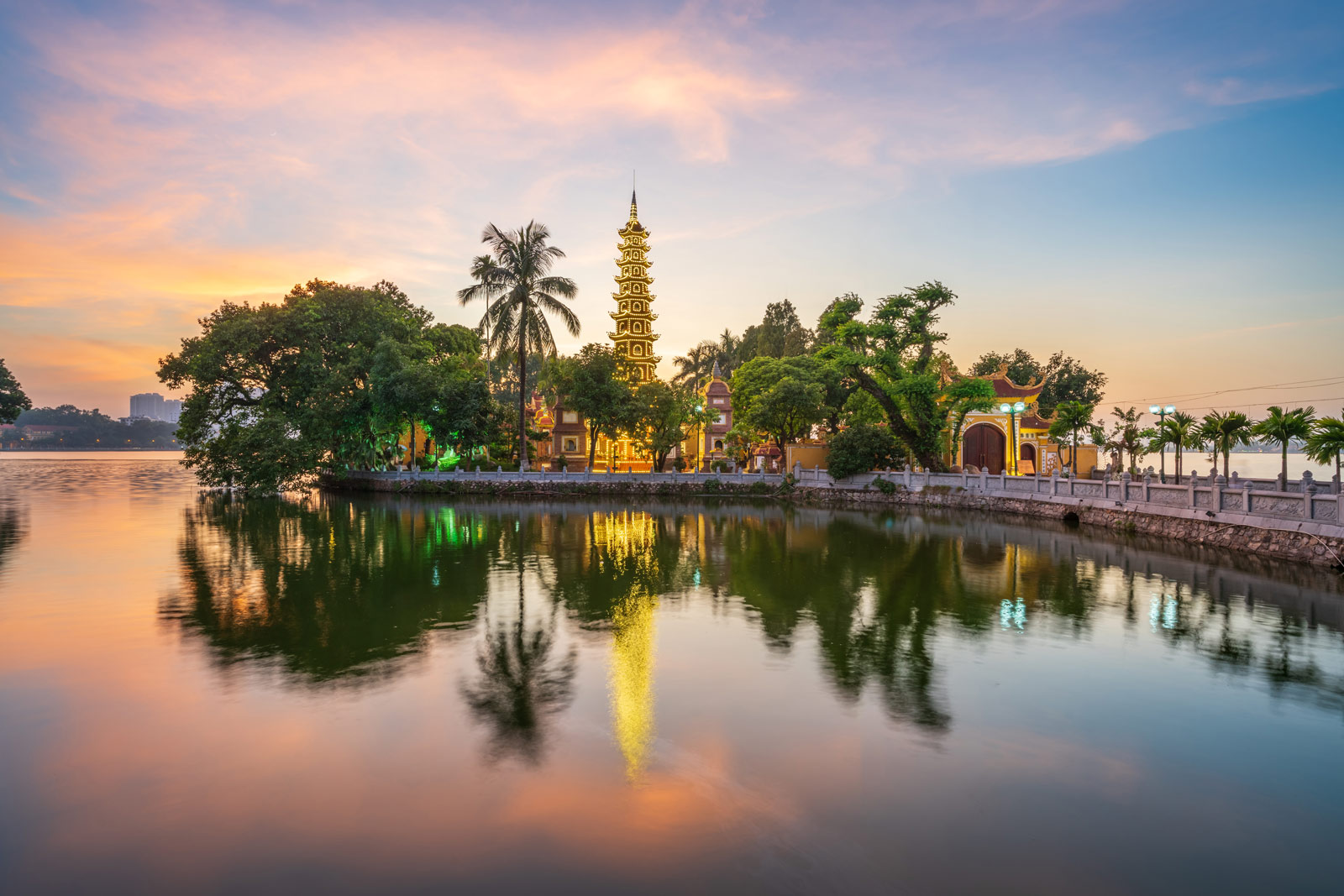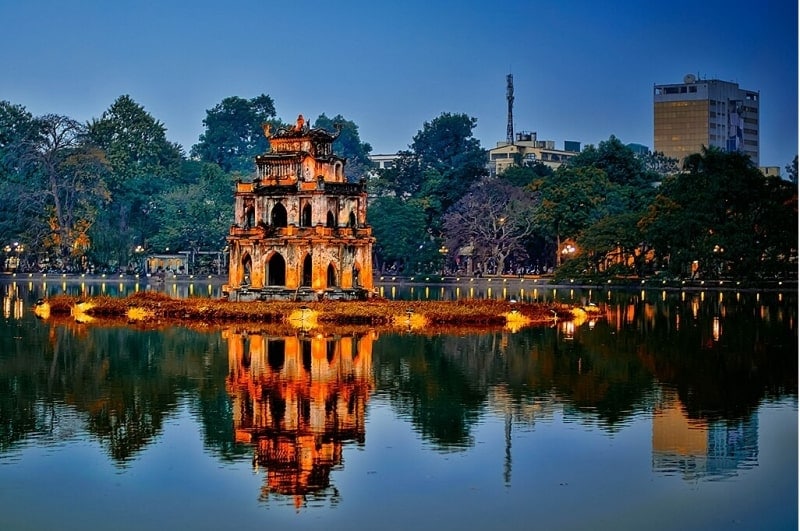
Hanoi, the vibrant capital of Vietnam, is a city that captivates the senses. A tapestry woven with ancient history, French colonial elegance, and the bustling energy of modern life, it offers a unique and unforgettable travel experience. From the aromatic wafts of pho to the cacophony of motorbikes, Hanoi is a city that will both overwhelm and enchant you. This comprehensive guide will delve into everything you need to know to plan your perfect Hanoi adventure, including its top attractions, rich history, practical travel tips, accommodation options, transportation, and the best time to visit.
A Glimpse into Hanoi’s History:
Hanoi’s history is as layered as its pho broth. Founded over a thousand years ago, it served as the capital of various Vietnamese dynasties. The city’s name itself, "Hà Nội," translates to "between the rivers," reflecting its strategic location near the Red River.

Related Articles about Hanoi: A Journey Through Time and Taste:
- Paris: A Timeless Guide to the City of Lights
- Egypt: A Journey Through Timeless Wonders
- Portugal: A Tapestry of Sun-Kissed Shores, Ancient Tales, and Culinary Delights
- Uzbekistan: A Silk Road Jewel – Your Comprehensive Travel Guide
- Chiang Mai: A Traveler’s Guide to Northern Thailand’s Rose
- Ly Dynasty (1010 AD): Emperor Ly Thai To moved the capital to Thang Long (present-day Hanoi) and declared it the center of the kingdom.
- Tran Dynasty (1225-1400): This period saw the defeat of Mongol invasions, solidifying Hanoi’s importance.
- Le Dynasty (1428-1788): Hanoi flourished under the Le Dynasty, witnessing architectural advancements and cultural developments.
- French Colonial Period (late 19th – mid 20th century): The French colonial influence dramatically shaped Hanoi, leaving behind grand boulevards, elegant villas, and iconic landmarks like the Hanoi Opera House.
- Post-Independence: Following the end of the Vietnam War in 1975, Hanoi became the capital of a unified Vietnam, and has since experienced rapid growth and modernization.
Understanding this historical context enriches your experience, allowing you to appreciate the stories etched into the city’s architecture and the resilience of its people.
Top Attractions: Unveiling the Treasures of Hanoi:

Hanoi’s attractions are a blend of historical sites, cultural gems, and tranquil oases. Here are some must-see destinations:
-
Hoan Kiem Lake and Ngoc Son Temple: This iconic lake, located in the heart of Hanoi, is a symbol of the city. The serene waters are home to turtles, and the red-painted The Huc Bridge leads to the Ngoc Son Temple, dedicated to Confucian scholars, literary figures, and the deity of literature. Legend has it that Emperor Le Loi received a magical sword from the lake, which he used to defeat the Ming invaders.
-
The Old Quarter: Step back in time as you wander through the labyrinthine streets of the Old Quarter, also known as "36 Streets" or "Pho Co." Each street once specialized in a specific trade, and remnants of this organization remain. Explore the narrow alleys, browse the shops selling everything from silk and souvenirs to street food delights, and soak in the atmosphere. The Old Quarter is a sensory explosion, a blend of commerce, culture, and daily life.
-
Ho Chi Minh Mausoleum and Museum: Pay your respects at the imposing Ho Chi Minh Mausoleum, where the preserved body of the revered Vietnamese leader lies. Adjacent to the mausoleum is the Ho Chi Minh Museum, which chronicles his life and contributions to the nation. Be mindful of the strict dress code and security protocols when visiting. Nearby is the Presidential Palace, a grand colonial building that once served as the residence of the French Governor-General of Indochina.
-
Temple of Literature (Van Mieu – Quoc Tu Giam): This ancient temple, founded in 1070, is Vietnam’s first university, dedicated to Confucianism. Explore the beautifully preserved courtyards, admire the intricate architecture, and learn about the history of education in Vietnam. The temple is a serene escape from the bustling city.
-
One Pillar Pagoda (Chua Mot Cot): A unique and iconic pagoda built in the 11th century, it stands on a single stone pillar in the middle of a lotus pond. Its unusual architecture is a testament to the ingenuity of Vietnamese artisans.
-
Hanoi Opera House: A stunning example of French colonial architecture, the Hanoi Opera House is a must-see for its grandeur and elegance. Attend a performance or simply admire its facade.
-
Hoa Lo Prison (Hanoi Hilton): This former prison, originally built by the French to house Vietnamese political prisoners, later became infamous as the "Hanoi Hilton" during the Vietnam War, housing American prisoners of war. The museum offers a sobering look into the history of conflict.
-
Thang Long Imperial Citadel: A UNESCO World Heritage site, the Thang Long Imperial Citadel offers a glimpse into Hanoi’s imperial past. Excavations have revealed layers of history, including remnants of palaces, temples, and defensive structures.
-
Water Puppet Theatre: Experience the traditional Vietnamese art of water puppetry. Skilled puppeteers manipulate colorful puppets on a stage set in a pool of water, accompanied by traditional music and storytelling. This is a delightful and unique cultural experience.
Travel Tips: Navigating the City with Ease:
- Visa Requirements: Check visa requirements for Vietnam based on your nationality before you travel. You can obtain a visa on arrival (VOA) or apply for an e-visa online.
- Currency: The Vietnamese Dong (VND) is the local currency. ATMs are widely available, and credit cards are accepted in many hotels, restaurants, and shops.
- Language: Vietnamese is the official language. English is spoken in tourist areas, but learning a few basic Vietnamese phrases will enhance your experience.
- Transportation:
- Walking: The Old Quarter is best explored on foot.
- Taxis: Metered taxis are readily available. Ensure the meter is running.
- Ride-hailing Apps: Grab is a popular ride-hailing app, offering cars and motorbikes.
- Cyclo: Experience a traditional cyclo ride, a three-wheeled bicycle taxi, through the Old Quarter. Negotiate the price beforehand.
- Motorbike: Renting a motorbike is a popular way to get around, but be prepared for the chaotic traffic. You must have a valid international driver’s license.
- Bargaining: Bargaining is common in markets and with street vendors.
- Safety: Hanoi is generally a safe city. Be aware of your surroundings, especially in crowded areas, and take precautions against pickpockets.
- Food Safety: Street food is a highlight of Hanoi. Choose vendors with high turnover and observe hygiene practices. Drink bottled water.
- Respectful Attire: Dress respectfully when visiting temples and religious sites, covering your shoulders and knees.
- Traffic: Be prepared for chaotic traffic, especially motorbikes. Cross the street slowly and steadily, and let the traffic flow around you.
Accommodation Options: Finding Your Perfect Base:
Hanoi offers a wide range of accommodation options to suit all budgets and preferences:
- Luxury Hotels: The Sofitel Legend Metropole Hanoi, the Hilton Hanoi Opera, and the InterContinental Hanoi Westlake offer luxurious stays with excellent amenities and service.
- Boutique Hotels: Numerous boutique hotels in the Old Quarter provide a charming and intimate experience, often with unique decor and personalized service. Examples include the Hanoi La Siesta Hotel & Spa and the Oriental Jade Hotel.
- Mid-Range Hotels: Many mid-range hotels offer comfortable rooms, good locations, and reasonable prices.
- Budget Hostels: Backpackers and budget travelers can find numerous hostels in the Old Quarter, offering dorm rooms and private rooms at affordable prices.
- Homestays: Experience Vietnamese hospitality by staying in a homestay, where you can live with a local family and immerse yourself in the culture.
- Serviced Apartments: For longer stays, serviced apartments offer the convenience of a home with hotel-like services.
Transportation: Getting Around Hanoi:
- Walking: The best way to explore the Old Quarter and many of the city’s attractions.
- Taxis: Metered taxis are readily available. Use reputable taxi companies like Mai Linh or Vinasun.
- Ride-hailing Apps (Grab): Convenient and often cheaper than taxis, especially for motorbikes.
- Motorbike Taxi (Xe Om): A quick and inexpensive way to get around, but negotiate the price beforehand.
- Cyclo: A unique and leisurely way to experience the Old Quarter. Negotiate the price before starting your journey.
- Public Bus: An affordable option, but the routes can be confusing.
- Train: The Hanoi Train Street is a unique experience, but be mindful of the trains and follow safety instructions.
- Airport Transfers: Taxis, Grab, and shuttle buses are available for airport transfers.
Best Time to Visit: Weather and Festivals:
- Best Time: The shoulder seasons of March-April and September-November offer the most pleasant weather. The temperatures are mild, and the humidity is lower than during the summer months.
- Dry Season (November-April): Generally drier and cooler, with average temperatures ranging from 15°C to 25°C.
- Wet Season (May-October): Hot and humid, with high rainfall, especially in July and August. Average temperatures can reach 30°C or higher.
- Festivals:
- Tet (Vietnamese Lunar New Year): A major festival celebrated in late January or early February. The city is vibrant, but it can be crowded, and some businesses may be closed.
- Hung King Temple Festival (April): A major religious festival with celebrations at the Hung Kings Temple, honoring the founders of the Vietnamese nation.
- Mid-Autumn Festival (September-October): A colorful festival with lantern parades and traditional performances, particularly enjoyable for families.
Food: A Culinary Journey:
Hanoi is a paradise for food lovers. The street food scene is legendary, offering a delectable array of dishes at affordable prices. Here are some must-try foods:
- Pho: The national dish of Vietnam, a fragrant noodle soup with beef or chicken, herbs, and spices.
- Bun Cha: Grilled pork patties served with vermicelli noodles, dipping sauce, and fresh herbs.
- Banh Mi: A Vietnamese baguette sandwich filled with various meats, pickled vegetables, and sauces.
- Cha Ca La Vong: Turmeric-marinated fish fried with dill and served with noodles, peanuts, and shrimp paste.
- Egg Coffee (Ca Phe Trung): A unique Hanoi specialty, a rich and creamy coffee topped with a sweet egg yolk foam.
- Bun Bo Nam Bo: A flavorful beef noodle salad with peanuts, herbs, and a savory sauce.
- Fresh Spring Rolls (Goi Cuon): Rice paper rolls filled with vermicelli noodles, shrimp, pork, and vegetables, served with a dipping sauce.
- Banh Goi (Pillow Cake): Deep-fried pastry filled with meat, mushrooms, and glass noodles.
Conclusion:
Hanoi is a city that will leave an indelible mark on your soul. Its rich history, vibrant culture, delicious food, and friendly people create an unforgettable travel experience. By following this comprehensive guide, you can plan your perfect Hanoi adventure, immersing yourself in the city’s treasures and creating memories that will last a lifetime. So, pack your bags, embrace the chaos, and prepare to be captivated by the magic of Hanoi.





